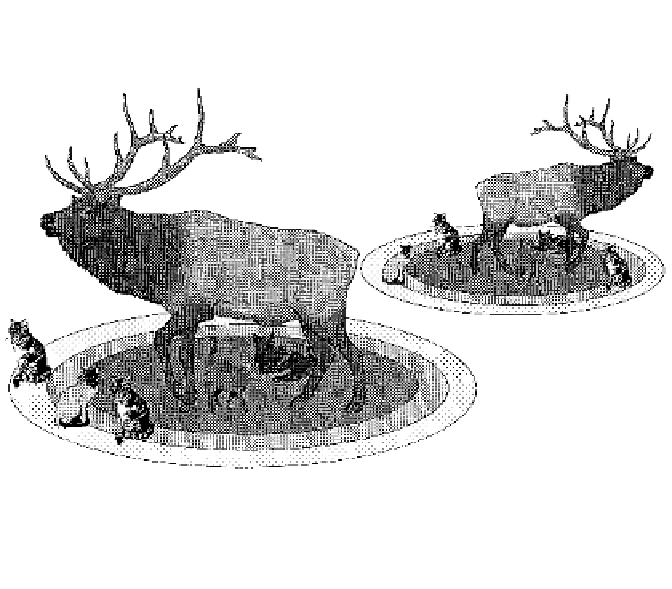Geoscience Reference
In-Depth Information
physical to visual or olfactory contact (Martin and Bateson 1993). Clutton-
Brock et al. (1982) classified red deer within 50 m of each other as in the same
party, whereas farm cats generally position themselves within 1 m of the near-
est neighbor (figure 10.4).
Indices of association can be calculated in which
x
is the number of obser-
vation periods during which A and B are observed together,
ya
the number of
observation periods during which only A is observed,
yb
is the number of
observation periods during which only B is observed, and
yab
is the number of
observation periods during which both A and B are observed but they are not
together (see figure 10.5). In some studies, as Ginsberg and Young (1992)
pointed out, the proportion of individual A's time spent with B [
x
/(
x
+
ya
+
yab
)] and the proportion of individual B's time spent with A [
x
/(
x
+
yb
+
yab
)]
may differ only because of a viewing bias concerning
ya
or
yb
(see also Cairns
and Schwager 1987). However, in the case of the farm cats the value
x
+
ya
+
yab
differs from
x
+
yb
+
yab
because individuals were genuinely present at the
resource center at different frequencies (figure 10.5).
This leads to a problem with the simplest association index [
x
/(
x
+
ya
+
yb
+
yab
)] because A's association with B is very strong, whereas B's association
Figure 10.4
What constitutes proximity between individuals differs between species and may take
account of physical contact, sight, sound, and smell. Farm cats within a matrilineal group may clus-
ter closely, but with individuals positioned in different annuli with respect to the most central females,
whereas two red deer stags might be interacting intimately over a distance much wider than that sep-
arating entire societies of cats.



